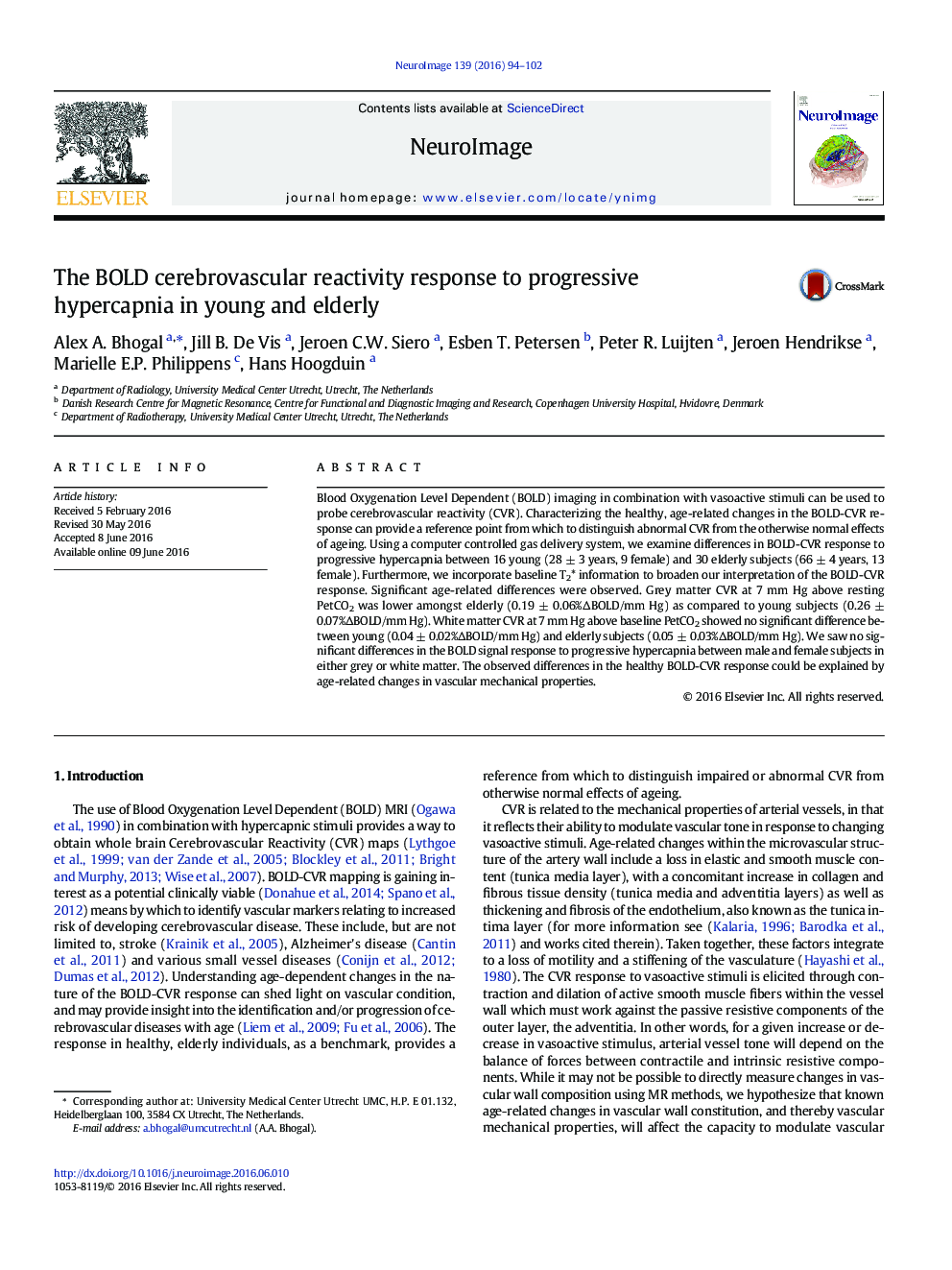| Article ID | Journal | Published Year | Pages | File Type |
|---|---|---|---|---|
| 6023402 | NeuroImage | 2016 | 9 Pages |
Abstract
Blood Oxygenation Level Dependent (BOLD) imaging in combination with vasoactive stimuli can be used to probe cerebrovascular reactivity (CVR). Characterizing the healthy, age-related changes in the BOLD-CVR response can provide a reference point from which to distinguish abnormal CVR from the otherwise normal effects of ageing. Using a computer controlled gas delivery system, we examine differences in BOLD-CVR response to progressive hypercapnia between 16 young (28 ± 3 years, 9 female) and 30 elderly subjects (66 ± 4 years, 13 female). Furthermore, we incorporate baseline T2* information to broaden our interpretation of the BOLD-CVR response. Significant age-related differences were observed. Grey matter CVR at 7 mm Hg above resting PetCO2 was lower amongst elderly (0.19 ± 0.06%ÎBOLD/mm Hg) as compared to young subjects (0.26 ± 0.07%ÎBOLD/mm Hg). White matter CVR at 7 mm Hg above baseline PetCO2 showed no significant difference between young (0.04 ± 0.02%ÎBOLD/mm Hg) and elderly subjects (0.05 ± 0.03%ÎBOLD/mm Hg). We saw no significant differences in the BOLD signal response to progressive hypercapnia between male and female subjects in either grey or white matter. The observed differences in the healthy BOLD-CVR response could be explained by age-related changes in vascular mechanical properties.
Related Topics
Life Sciences
Neuroscience
Cognitive Neuroscience
Authors
Alex A. Bhogal, Jill B. De Vis, Jeroen C.W. Siero, Esben T. Petersen, Peter R. Luijten, Jeroen Hendrikse, Marielle E.P. Philippens, Hans Hoogduin,
